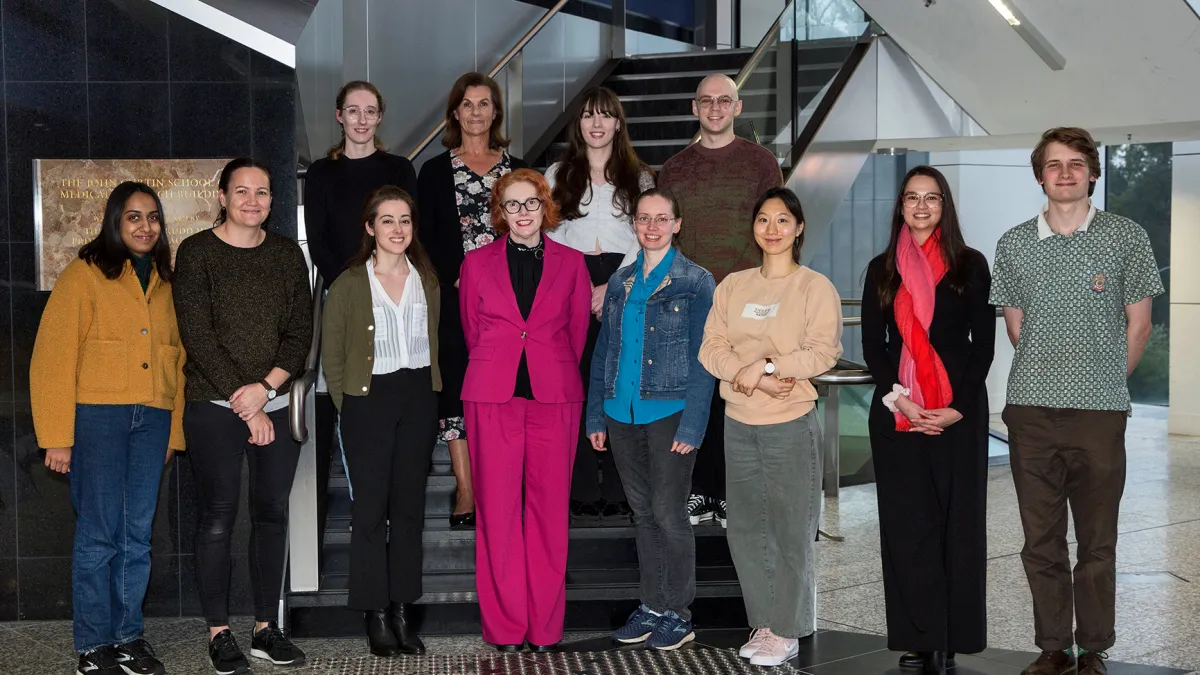The Quinn Group - Brain Cancer Discovery
The Quinn Group's current research involves generating genetic models using Drosophila melanogaster to understand the initiation and progression of human cancer
Research themes
About
The >1800 patients diagnosed with primary brain cancer in Australia annually are faced with a dire prognosis: a 20% chance of survival beyond 5 years. Alarmingly, no new therapies have entered the brain cancer clinic in 35 years and, thus, patient outcomes have not improved in more than 3 decades. A major impediment to improving primary brain cancer (glioma) treatment is our poor understanding of normal brain development, the critical first step in unravelling the complex molecular genetics of glioma. For this, we require sophisticated genetic models as glioma is not one disease, but comprises many sub-categories characterised by a combination of unique mutations and molecular changes.
As glioma is predicted to be driven by tumour stem cells, a core research strategy employed by the Brain Cancer Discovery Group is to use sophisticated Drosophila (vinegar fly) genetic models to determine how genes mutated in glioma alter neural stem and progenitor cell (NSPC) fate. Very excitingly, novel tumour suppressor genes identified in human glioma drive NSPC overproliferation, a hallmark of cancer, in the fly brain. Thus, our genetic models are providing insight into NSPC dysfunction driven by glioma mutations and, critically, enabling dissection of the molecular genetic signatures of specific brain cancer sub-types.
The development of efficacious brain cancer therapies has been severely hampered by the inherent disconnect between fundamental research and the clinic. Towards closing this gap, we have also established the Canberra Brain Cancer Collaborative (CBCC). This interdisciplinary collaborative connects drug discovery research at Australian National University (ANU) with clinical endeavours at The Canberra Hospital (TCH) oncology, neurosurgery, radiation oncology, and neuro-pathology units.
Moreover, through the ACT Brain Cancer Biobank (ABCB), the Canberra node of Brain Cancer Biobanking Australia (BCBA), we are generating the diverse glioma genotypes necessary for drug discovery research. Critically, our pipelines involve whole genome and transcriptome sequencing of primary glioma stem cells from patients, providing the deep molecular classification for brain tumours; the integration with imaging, histopathological, and patient data is essential to develop robust pre-clinical models for drug discovery. To identify drugs targeting brain cancer sub-types, we use human brain organoid “mini-brain” models to recreate the heterogenous cellular composition of brain tumours. These next-generation, three-dimensional cell systems are enabling us to model progression of specific tumour sub-types and, ultimately, identify new therapies capable of killing cancer cells while leaving the patient’s healthy neural cells intact. Thus, we will identify new therapeutic candidates that can be fast-tracked to the clinic to improve patient outcomes.
If you wish to support our Brain Cancer Research Program please visit the Australian Brain Cancer Foundation website.
Enquiries are welcome from potential Honours or PhD students. A variety of projects are available within all of the areas of research undertaken by this Group. Please contact us.
Projects
Members
Leader
Researcher
Technician
Collaborator
Professor of Bioengineering
Student
External members
- Dr David Levens
- Dr Ganes Pranavan
- Dr Peter Mews
- Dr Mitali Fadia
- Dr Hari Bandi
- Professor Lee Wong














